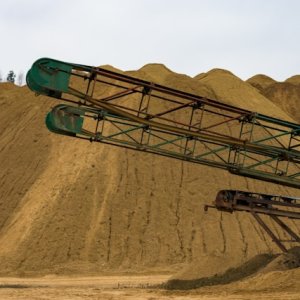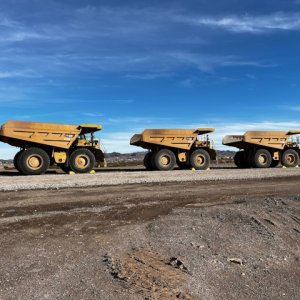Rock Size Online Measurement for Grinding Optimization

STORY INLINE POST
Comminution is the most important minerals processing operation, partly because of its effect on downstream processes, but also because the feed size distribution is one of the most important factors affecting primary grinding mill performance.
Because variations in feed size, along with ore composition and grindability, strongly affect mill performance, online measurement of these disturbances is crucial to define the mill throughput model.
Product sizes are used to determine the optimal size of the feed for maximum efficiency, as well as to determine at which feed sizes losses occur in the plant, such that they may be reduced.
Important changes in plant operation and control are made based on the results of the particle size analysis, either by an operator or automatic controller.
The ore feed size may in some cases be inferred by applying parameter estimation to operational data, but a more direct approach is to monitor images of the feed and inferring the size distribution using computer vision.
How Is the Rock Particle Size Distribution (PSD) Accomplished?
Methods exist that calculate the size distribution from input images. Traditional computer vision techniques are used for feature extraction.
The pioneer system for measuring PSD was introduced in 1996, and used computer imagining processing to segment the input images, carry out some corrections, and then calculate the size distribution. The initial accumulated curve is corrected using the Rosin-Rammler equation.
Between 2011 and 2014, there were proposals where image analysis is used in conjunction with a neural network. Traditional computer vision techniques are used for feature extraction, but a neural network is used to estimate the particle size distribution.
Since 2015, deep convolutional neural networks (CNNs) have been used with a more accurate approach. These networks are very efficient at extracting features for classification and regression tasks, to the point where they can achieve superior performance to the combination of traditional feature extraction and fully connected neural networks.
Using a CNN for bulk solid size distribution estimation from a conveyor belt is novel, and in 2019, the fist embedded system using GPUs running Deep CNN was introduced to measure PSD in a fine ore feeding primary ball mills using high resolution cameras.
Conventional Technology Limitation
The traditional computer vision techniques have some limitations:
-
Can't detect small rock size (<3mm)
-
Fine ore cracking generates segmentation detection errors
The new technology is based on deep learning techniques, and guarantees smaller size detection and avoids detection error with ore buck cracking.
Server vs. GPU-Based Embedded Systems?
The years 2019-2020 mark the first installation of an ore PSD measuring system over conveyor using GPU embedded systems. Before this, the conventional system was based on servers for imaging processing.
The IIoT compatible system has the value proposition to isolate the data transferring to the internal ethernet network. Artificial vision cameras at 10-30 frames per seconds consume a high bandwidth, which is eliminated using GPU edge processing.
Deep Learning: the AI Capabilities That Are Changing the Rules in Image Processing
Deep Learning with CNN eliminates the need for explicit feature extraction in image processing. After collecting images from the conveyor, it is a very easy process to train the CNN, tagging the ore for making a binary classification: fines and rocks.
The CNN network output is an object list that represents each rock with the contour points and object area.
The calibration and correction based on a distribution function (Rosin-Rammler, Gaudin-Schumann or Swebrec) is done similar to the traditional PSD measurement systems.
Using GPUs to run Deep CNN enables edge image processing to eliminate network traffic used in conventional systems that use computing for image processing. Nowadays, small panels with GPUs are being installed on floor sites to perform ore PSD measuring over conveyors.
Real-Time Processing, Digital Twins Are Required for Process Autonomy
Real-time ore PSD measuring enables digital twins (DT) in primary SAG/Ball Mills, considering the reliability and high availability of this edge system for critical autonomy decisions.
For SAG Mills, the ore PSD defines the optimal charge toe size to maximize the throughput.
For Ball Mills, the ore PSD defines the optimal rate of circulated load to get the optimal |P80 to the downstream flotation process.
Using Online PSD Measure in the Mill Feed to Predict the Ore PSD on Mill Discharge
A preliminary version of digital twins in ball mill will return to the mill operation the PSD in the mill discharge, leading to some control action to get the targeted P80.
Define the optimal tonnage to feed the mill and the water rate based on the ore fine fraction will be advanced control action.
Going to a Small Rock Size Measurement
Measuring on fine ore enable a more precise PSD measurement. High resolution cameras and greater processing capabilities are required and with the new GPU units, it will be possible to measure particles under 2mm.
Remarks
The COVID-19 pandemic accelerated and reconsidered the use of new options and technologies related to smart sensors and digital twins.
Standalone GPUs are scaling up the capabilities to cover the growing demand in autonomous vehicles and distributed smart city solutions for automated object detection using vision cameras. This technological trend supports the decision to use these technologies in ore PSD measurement.
This new generation of edge vision solutions allows local image processing to avoid unnecessary image traffic on internal ethernet networks. On the other hand, with remote access through the internet to enable automatic improvement and maintenance algorithms it can be considered an advanced IoT solution.
























